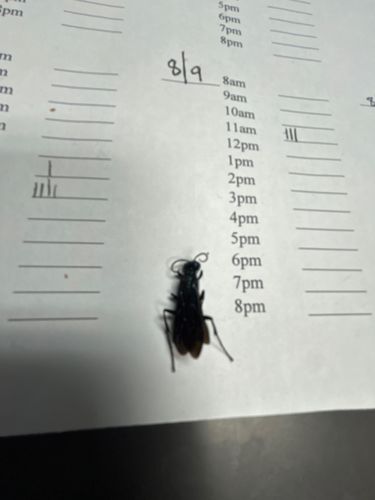Velvet Ant (likely a Dasymutilla species)
Scientific Name: Dasymutilla spp. (species not discernible from image)
Order & Family: Order: Hymenoptera, Family: Mutillidae
Size: Typically 0.5 to 2.5 cm (0.2 to 1 inch) in length, depending on the species and sex.

Natural Habitat
Commonly found in sandy areas, grasslands, open woodlands, and deserts, where their host insects (ground-nesting bees and wasps) are abundant. They can also be found in suburban yards and gardens.
Diet & Feeding
Adult velvet ants feed on nectar from flowers, honeydew, and other sugary secretions. The larvae are external parasitoids, feeding on the larvae and pupae of ground-nesting bees and wasps.
Behavior Patterns
Velvet ants are solitary wasps. Females are wingless and resemble ants, but move quickly and erratically. Males are winged and can fly. They are active during the day, especially in warm weather. Females spend most of their time on the ground, searching for host nests. When disturbed, velvet ants may produce a squeaking sound as a warning.
Risks & Benefits
Risks: Female velvet ants possess a very potent sting, often described as one of the most painful insect stings, leading to their common nickname 'cow killer' (though they cannot actually kill a cow). The sting is not typically medically dangerous unless an individual has a severe allergic reaction. Benefits: As parasitoids, velvet ants help control populations of other ground-nesting insects, some of which may be considered pests.
Identified on: 8/17/2025